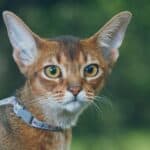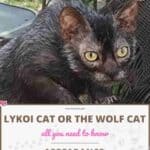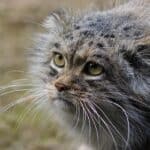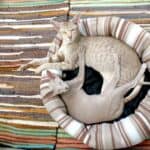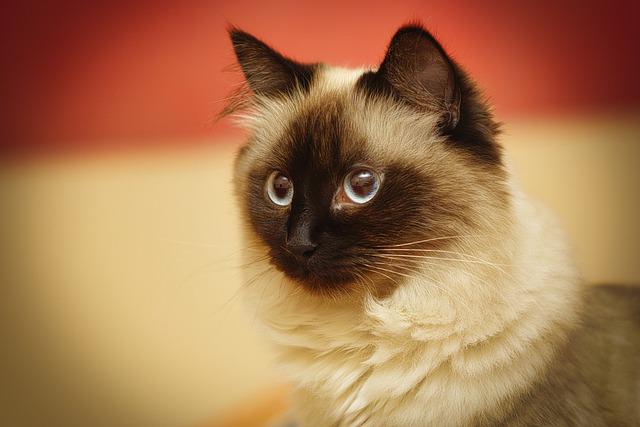
Burma cat: for show, companion or breeding, however, it is a lovable and beautiful cat, docile and friendly. That of the Burma cat is an elegant breed, with a massive build and blue eyes. There is a very precise standard on genetic characteristics and therefore selection is difficult.
The pet Burma cat is the specimen that, despite being magnificent, shows “defects” of standards to the most expert eyes. For example, but then we will see what it really means, he may have milk spots, squint, a lump in his tail, a “little to heart” snout … all this destined him to salons and excludes him from both the exhibition and the “breeding” career. Living room career, yes!
The show cat of Burma is perfect, it is the rare pearl: good structure, beautiful head, good profile, impeccable glove. There are few, the others are for breeding, somewhere in between. This type of Burma cat, despite not having completely respected standards, remains “acceptable” and indeed useful in the selection for the improvement of future kittens.
Burma cat: appearance
The Burma cat is of medium size: this means 3 or 4 kg for females, more slender and elegant, almost 5 for males, more powerful with a more massive neck. The bone remains robust for both sexes while the body is slightly elongated with respect to the legs. The tail of the Burma cat is very long and the tip must be able to touch the shoulder but the peculiarity of this breed is the morphology of the muzzle, unique in the world among all the breeds.
The head of the Burma cat can be circumscribed in a heart, the cheeks are full and the nose is of medium length without stop, the rounded profile however shows prominent cheekbones and deep blue eyes well apart but proportioned. All the parts of the muzzle of the Burma cat must be in harmony to give a sweet and open expression that is well combined with its walk on tiptoe, as if wearing high heels, which makes its walk very sinuous and elegant.
Burma cat: the coat
With semi-long hair the coat of the Burma cat is wonderful in its variety if not in its silky texture to the touch. It has no undercoat so there is also the advantage that it does not get knotted. The hair of the Burma cat is longer on the body, around the neck and on the tail carried high in a plume, shorter on the muzzle and on the extremities.
The Burma cat is light in color, it becomes intense in color only on the so-called “points” hence the name colourpoint. These are the coldest parts of the body – muzzle, ears, legs, tail, and in the males also the genitals – highlighted with respect to the rest of the “discolored”, almost white body. Then there are the ends of the legs, called “gloves”, pure white, which must not strictly exceed the articulation of the legs and must be symmetrical to each other.
Among all the purebred cats, the Burma cat is the only one to have gloves, as for the coloring linked to cold or warm areas – you may ask – it is all due to the Himalayan gene. Being sensitive to heat, this gene ensures that the hair in a more perfused area of the body during growth does not color and vice versa those in cold areas darken. In the belly of a mother-cat, however, everything is at a constant temperature, so the coloring of the Burma cat appears when it is already born. At one week, for the darker Burma cat, and at two if lighter, and it starts with ears, nose and tail, until the points are completed, at two / three years of age.
Burma cat: colors
The best known and traditional colors of the Burma cat are the seal-point, dark and “tan”, with its respective dilution blue-point, slate gray, cold but more delicate while the rest of the body is golden beige as legend has it. Then there are other colors, slightly lighter for the Burma cat, such as chocolate-point, milk chocolate color and its respective lilac-point dilution in magnolia color.
The “new colors” are red-point and cream-point, for female Burmese cats there is also the “turtle scale” variant, with striped red and cream, called tortie -point. brick-colored for darker colors or pink for lighter ones, the inside of the ears always has white hairs. For all the colors of the Burma cat, beyond the sex, there is the version with light streaks that draw rings on the legs and tail and an M on the forehead. In this case we are in the company of the tabby-point cat of Burma.
Burma cat: character
Elegant in its movements, the Burma cat is also elegant in character and in the way of doing things. And in the soul. He knows how to be a constant presence of character in a house, apartment or villa with a garden. And the Burma cat has a lot of character: it shows itself strong and vital, a great playful who never gets old and who likes the presence of a playmate, feline or human.
With the owner, then, the Burma cat develops a very close, intense, sometimes exclusive relationship. The Burma cat is never aggressive, not even with slightly pestiferous children, although it is good to be on your guard so that spite does not make it change its character, but it is difficult even thinking that the males of the Burma cat are said to be nicknamed “gentilgatti” for the habit in front of the plate of making the “ladies” finish before feeding them.
Burma cat: care and nutrition
During the moulting periods of the Burma cat, one bath per month is recommended to help eliminate dead hair and favor the growth of the new one. Having no undercoat, however, this animal does not require one combing a week for the coat to remain shiny. This also helps a healthy diet based on croquettes, always available, accompanied by a bowl of fresh water and a portion of wet food, whether meat or fish. The Burma cat does not suffer from obesity and is able to self-regulate, you can also use multivitamin supplements, it is almost a must for puppies up to the year and in periods of moulting or particular stress.
Birman cat: breeding and selection
From the characteristics described, it is understandable that the Burma cat is genetically very complicated and is very difficult to obtain with ideal standards and it often happens to come across small variations that make it “not for show” even as a puppy. These are tufts of white hair on the body or dark on the gloves, certainly not genetic defects such as squinting of the eyes or knots in the tail, now almost permanently eliminated. Among the standard defects of the Burma cat also short tail, depigmented nose, round or small eyes, too pointed ears and, with regard to the hair, rough or too woolly, too long or even with an undercoat.
Birman cat: breeding in Italy
The owner is available to host the “future adoptive parents” or to take the puppy home.
Before being sold, each puppy is subjected to scrupulous veterinary visits to ascertain the excellent state of health. All kittens are given dewormed, vaccinated and with the recall carried out, all accompanied by the health card, the pedigree, the transfer of ownership and the veterinary certificate attesting the perfect health conditions of the kitten.
Burma cat: price
The price of a kitten of Burma cat can vary from 810 to 1,110 USD, and it can even reach 1,500 USD, if you want to add the children of award-winning champions. To understand these figures it should be known that there are costs that we do not always know, but that the breeder, if he is a good cat breeder in Burma, must bear.
They range from the cost of the selection, for the guarantee of a certain appearance and a certain character, to the cost of breeding animals up to the cost of equipment, veterinary care and official documents. And then every gestation has its price, every litter its own and also the mother must be put back in shape.
Cat of Burma: legend has it that
Once upon a time there was a temple in Burma, that of Lao-Tsun, inhabited by the sage Mun-Ha, who spent days and days in contemplation of the golden sapphire-eyed goddess: Tsun-KianKsé. She had 100 white cats that turned gold thanks to a gesture of deep love from her boss, “Sihn”. The day Lao-Tsun was attacked by the enemies and the venerable Mun-Ha died, Sihn in fact drew the gaze of the goddess on the lifeless master and Tsun-KianKsé, moved, colored her fur like gold and her eyes of she as Sapphire. After 7 days the other 99 white cats of the temple also changed into the same color and from that day this animal were considered sacred. From a cat of Burma, in fact, to a sacred cat of Burma.



